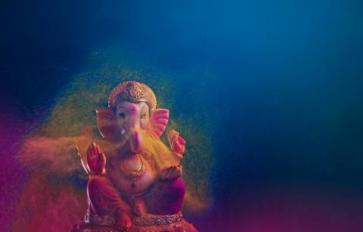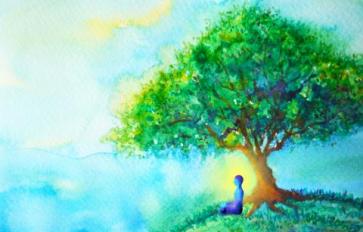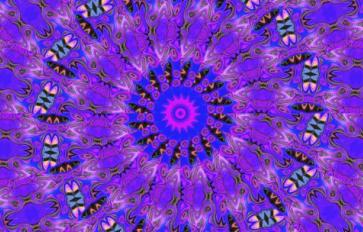
We have come to understand that yoga is present in every living, breathing moment. It is a body of knowledge, a practice and a way of life. It dwells in many aspects of our daily existence: how we see the world, the words we use, the ways we relate, the choices we make, and ultimately how we move and act to shape our experience. Its presence is subtle and permeating. As we begin to understand the greater framework of yoga, we can look to the Yamas and Niyamas. These are moral codes of conduct, the restraints and observances that guide the pursuit of happiness, alleviate suffering, and invite integrity into being.
Brahmacharya is the fourth Yama or self-restraint. In Sanskrit, “Brahma” symbolizes God or creation, and “charya” is the path, to follow or walk. Brahmacharya translates to “walking with God.” Often people understand it as the principle of celibacy, but its underlying ethos transcends this definition. Each Yama and Niyama holds a thread of universal truth, but how they show up in our daily practice differs for every individual.
How do you use your energy? Do you spread yourself thin, depleting your vital life force? Where do you direct your energy; how do you wield it; and do you guide it responsibly—towards others and inwardly?
The notions of non-indulgence and non-excess are rooted in the principle of Brahmacharya. The great philosopher Friedrich Nietzsche once said “the mother of excess is not joy but joylessness.” We see excess sneak its way into addictive behaviors. There are obvious relationships that we deem unhealthy—alcohol addictions, substance dependencies, abusive relationships…the list goes on. However, there are other relationships we are unaware of that are born from an obsession of desire. Food is a good example that is often overlooked. Food is a form of nourishment. Ancient texts and popular wisdom will tell you that beneath the craving, there is an emotional void. And when we feel a sense of loneliness or emptiness in one aspect of our life, we try to fill the lack of love with food [or another practice or substance]. Sometimes our addictions can move through transference, from one object to another. One may start with a dependency on a painful partnership and transfer it to a compulsive yoga asana—a practice often deemed “good” for us. Yogas chitta vritti nirodha. This is the second yoga sutra: Yoga stills the fluctuations of the mind. Imagine creating an addictive relationship with the asana practice, to the point that if you missed a day you became triggered or angry—quite the opposite of calming the mind. The principle of Brahmacharya keeps our intensity and desire in check.
Let us shift gears for a moment. In our modern world, where technology is king, how many hours do you find yourself scrolling on social media or diving into the rabbit hole of Internet news? Nowadays, we find businesses popping up that offer “digital detox retreats” because there is a growing recognition that technology addiction is real. Two minutes turn into two hours before bed, and next thing we know, we wake up less rested or restored. The Harvard Medical School released a study confirming that wavelengths of light [from screen time] suppress our sleep-inducing hormone melatonin. So next time you grab your iPad or smartphone before bed, think twice and ask: will this ultimately nourish you?
There is a fine line we ride in our efforts and it can be summed up by Voltaire’s great words:
“Perfect is the enemy of good.”
Am I enough? This is a question our ego asks itself many times in life. And it doesn’t help that society praises perfection. We are encouraged to write it on our resumes, to champion our obsessive-compulsive behaviors because it will make a great asset to the team. But at the expense of what? Happiness? Joy? Contentment? Enough is the word that riles us overboard just when we are at a balanced place. In Deborah Adele’s book The Yamas & Niyamas Exploring Yoga’s Ethical Practice, she writes, “In Yogic thought, there is a moment in time when we reach the perfect limit of what we are engaged in. It is this moment of ‘just enough’ that we need to recognize.” It is that moment when we are 75% full and don’t need to take another bite, the moment when we are physically exhausted and we don’t need to stay up two more hours to do a little more work, the moment we have reached understanding in our differences and don’t need to cement the sore sentiments in. Adele speaks about how we wear busyness as a badge of honor and accomplishment in our modern society. Learning to recognize and discern the desires of the mind and ego from the needs of the body and heart are where the opportunities lie in exercising the principle of brahmacharya.
When we ask how we can better direct our vital life force, our energy, and our power we can draw upon the tool of mindfulness. It is this present-moment awareness that unearths behaviors we do not always recognize because they have nested deep into the grooves of everyday life, of our daily habit. It is the willingness to take an honest look at one’s self, recognize one’s habits around excess and depletion, and be open to exploring the discomforts of rewriting the habits or samskaras we hold. It is in that mindfulness that we begin to recognize the opportunities to change. Brahamacharya is not about giving up enjoyment in life, but rather making mindful choices about how one expends his or her energy. In doing so, one leads a life of wise action and full presence of every moment.







